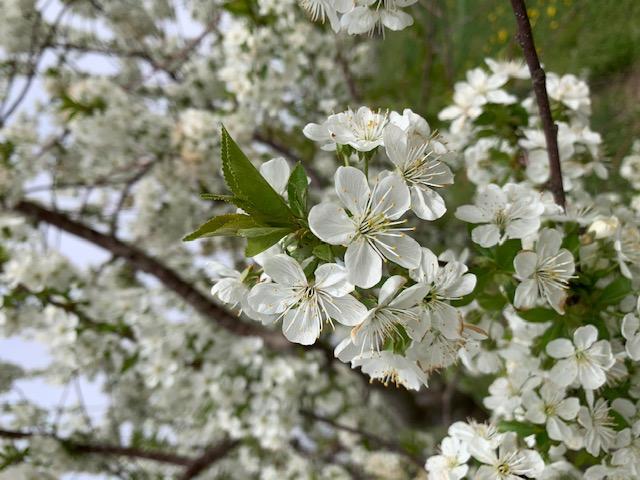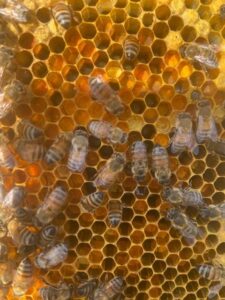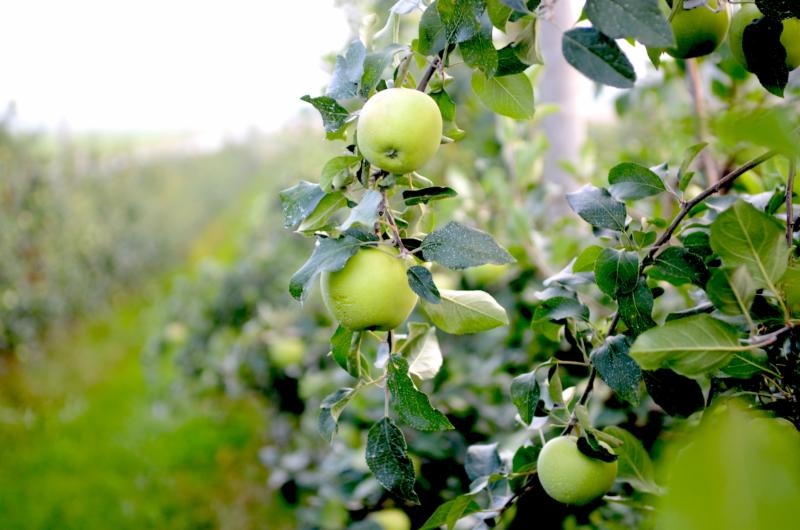One More Month of Cold

In the life of a farmer, the weather means everything, and we need a little of all of it.
It was March 31st and I was in short sleeves. The 70+ degrees prompted me to shed layers, and I felt as if we were making a quick turn for summer.
In the lives of a farmer, the weather means everything, and we need a little of all of it.
Earlier that week I was hustling to take advantage of the teens on Monday morning to spread the last of my manure on my pastures. The crunchy ground kept the tractor suspended without leaving tire marks. Now, 3 days later I was sporting shades and thinking about changing the oil in the cub cadet.
I was at Rittman Orchard/Bent Ladder Winery to pick up our wine shipment for OCP. I sat at the bar as Matt, the owner, poured me his latest cider. We started talking. I probed about the apple blossoms, in which Matt replied, "None yet, and I'm hoping for another month of cold."
I understood Matt's statement; but to understand it, you must understand the lifecycle of an orchard.
The "Potential" for an Orchard is set the year before.
To the right is a photo of apple blossoms. They are gorgeous, but worth waiting for.
Tree fruits - like apples, peaches, cherries, and plums - set their buds in the summer for the following year. Healthy trees with adequate moisture means that the "potential" for the following year is great. Last year was a good season to set the potential for this year.
Over the winter, the trees go into dormancy. They require a certain number of cold days before they come out of dormancy. Generally, a few hot days in January or February won't affect the dormancy. But consecutively warm days in March and April will wake them up.
After waking up, the trees start to bloom. Peaches bloom first, followed by cherries, plums, and apples.
It's Nature's Wingman...the Honey Bee
The blossom on the tree is what allows the tree to set fruit. It is nature's way of attracting pollinators - like bees - to do it's work. The bees, drawn to the blossoms by bright colors, scents, and a food source (nectar), collect pollen (the male genes) and transfer it (inadvertently) to the female components of the tree. In a sense, you can say the honeybee is nature's wingman, all puns intended.
In the spring, beekeepers are busy moving their colonies into fields and orchards around Ohio. Jason at Bosler's Apiary, who manages our hives, also supplies hives to farms from Florida to Ohio. This keeps his bees busy year round. His general rule of thumb is 2 colonies per acre of apple trees. Each colony is set with approximately 30,000 bees, and the colonies grow to nearly 50,000 at the end of pollination due to the abundant food source for them in the orchard.


Once the blossoms are there, the threat of damage is real
I just got off the phone with Rich at Eshleman's Orchard in Clyde. His peaches and cherries are just starting to blossom. I asked Rich about the threat of cold. He said that the critical window for orchards is from now until May 14th. If we can make it to May 14th without a killing frost, the blossoms will have a chance to set fruit and begin to grow.
As of now, Rich proclaims that there is a heavy blossom set on all the trees. If we can make it a few more weeks without frost damage, then we should have a good crop this year.
Something for Everyone
While I've been down in the doldrums the last couple weeks about the weather, these kind of interactions remind me that Mother Nature knows best. In a way, our post-Easter snow and cool days are a blessing.
While many farmers - me included - are jumping at the bit to get into the field, we must remember that our gains this early are minimal. Some crops, like ryegrass and oats, may take off and get an early edge over the weeds, but most crops - from vegetables to corn and beans - are too much at risk to plant.
For me, there are two big hang-ups. One, I simply haven't had the chance to get the fields "worked" - meaning plowed and disced to form a seedbed for produce. The cold-hardy produce crops - like lettuce, kale, cabbage, collards, and cauliflower - are currently stalled in the greenhouse.
The second biggest hangup is grazing. My cattle are still pent up in the barn eating hay. To put them out now could damage the pastures and thwart future potential for yield. For the other animals, such as the broilers, they are out but with minimal benefit from the pasture. They are OK with cool days; but cool and raining sideways makes an unhappy bird.
I'll remain patient and know that this weather may be seen as a form of balance and harmony in Nature. And Matt, you got what you wanted - another month of cold.
